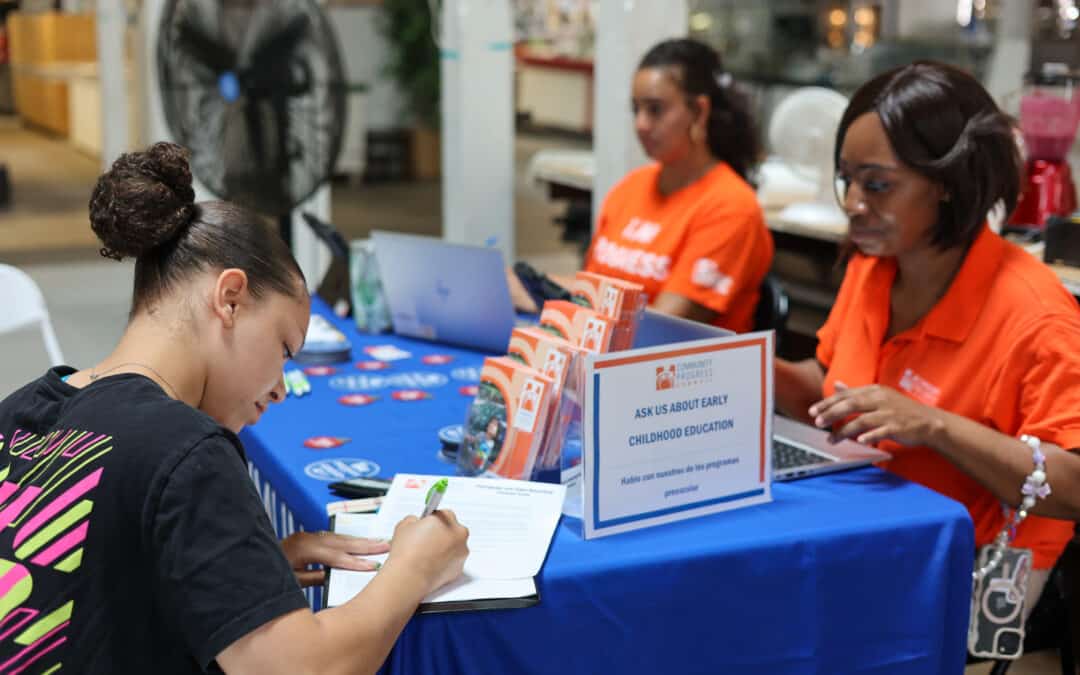At Community Progress Council, we believe that the journey to self-sufficiency begins the moment someone reaches out for help. That first call or first conversation is more than just intake: It’s the beginning of a relationship.
Over several years, our team has reimagined how we welcome and connect with participants across York County. What started as a response to the challenges of COVID-19 has evolved into a robust, centralized intake system that is transforming how families access services, how our team members collaborate, and how we understand and respond to community needs.
The Challenge: Too Many Doors, Too Many Forms
Before centralized intake, families often had to navigate between multiple internal programs independently. Early childhood education, the Women, Infants, & Children (WIC) program, Housing Education — each program had its own intake process, paperwork, and requirements.
A parent seeking assistance for multiple needs, even all within Community Progress Council, might have to repeat their story four times — or more. Worse, it often meant that families weren’t aware of all the resources and support that CPC could provide.
It was inefficient and frustrating for the participant, and it didn’t reflect a comprehensive or integrated approach that our team was working to build.
Small-scale testing and internal reflection made it clear: Our siloed approach wasn’t working.
The Pivot: Innovation in a Time of Crisis
When the COVID-19 pandemic began, Community Progress Council was in the midst of hiring for a new role: The Navigator.
Despite the upheaval, we moved ahead to post the position, conducted interviews via Zoom, and began building a framework to have people come to Community Progress Council through one point of contact.
For every phone call requesting help, a small team started collecting basic demographics, assessing for crisis needs, and connecting participants to both internal and external resources.
“It wasn’t perfect, but it was a start,” says Assistant Chief Program Officer Lindsay Veres. “We were building it as we were going. We began not just collecting information to move someone through the process, but building on our core value of relationship.”
People continued to call for food access, rental assistance, and other immediate needs, but the Navigators also dug deeper — and the early results were promising.
The Evolution: Expanding Our Outreach and Connections
In 2023, Community Progress Council was selected — through a highly competitive grant process — to implement a WIC Community Innovation and Outreach (WIC CIAO) Project. Our goal? To develop, implement, and evaluate innovative outreach strategies to increase awareness, participation, and benefit redemption in the Special Supplemental Nutrition Program for Women, Infants, and Children (WIC), and reduce disparities in program delivery.
This was an opportunity to put resources behind expanding our outreach opportunities: Meeting people where they already were, and connecting them to comprehensive, integrated services.
Outreach Navigators, a role created through the WIC CIAO grant, would implement the same centralized intake process that was key to our revised service delivery model. But they would do so with a focus on families with children under 5, helping them better connect to the full complement of services they may qualify for.
The WIC CIAO grant enabled our team to think strategically and continue to evolve our process around centralized intake and how we connect families to services. When the 18-month grant period ended, we committed to continuing to fund an expanded Navigator team, investing in cross-training to integrate all Navigators into a cohesive team.
“We started thinking about how we would welcome participants in the future,” says Maria Jacome, Director of Intake & Coaching. “Wouldn’t it be easier if whomever a participant spoke with could support them?”
The Result: Living Our Core Value of Relationship
Today, centralized intake at Community Progress Council is far more than a call center. It’s a comprehensive, relationship-based entry point into our agency. Our Navigators are trained in active listening and motivational interviewing, asking open-ended questions that go beyond surface needs. They don’t just collect information — they build trust.
“We hear that frustration of having to navigate all of these different places,” Veres says. “So when people call us, we are going to listen. People will say, ‘Everyone else blew me off, but you guys actually listened to me.’”
Our intentional approach around intake allows our team to assess immediate needs and lay the foundation for long-term support through coaching and integrated services.
“Every relationship starts with that first call, or first meeting,” says Jacome. “The coaching relationship isn’t possible unless Navigators are also establishing that relationship and trust from the beginning.”
The Impact: Data-Driven, People-Centered
We’re seeing the results in both stories and statistics. More participants are connecting to multiple services through a single intake. Dual enrollment in programs like WIC and Head Start has increased. And thanks to data-focused practices, we can track trends in real time — who’s coming to us, what they need, and how their journey unfolds.
This data helps us:
- Identify gaps in services and staffing, including language access needs
- Understand seasonal trends in traffic and support requests
- Strengthen relationships with referral partners
- Inform future planning and resource allocation
The Future: One Team, One Mission
No single program can build lasting stability: Progress toward self-sufficiency requires comprehensive, integrated services.
As Community Progress Council looks ahead to consolidating our York-City based services under one roof, we’re thinking strategically about how to welcome participants in a way that’s seamless, supportive, and sustainable.
Cross-training staff, streamlining processes, and building a cohesive intake and coaching team ensures that no matter who picks up the phone or greets a walk-in, they’re equipped to help.
“We’ve learned that integration works,” Jacome says. “From the WIC CIAO pilot to the expansion of Navigator roles, we’re not afraid to try things, see what works, and figure out how to continue it. We’ve seen how intentional outreach and shared systems lead to stronger outcomes, and we’re committed to continuing that momentum.”

